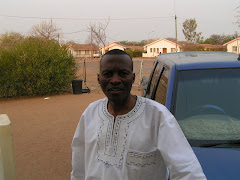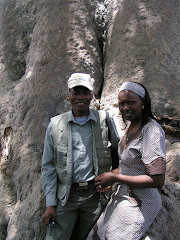Children involved in prostitution and other forms of commercial sexual exploitation should be treated primarily as the victims of abuse. As such, their needs should be given careful assessment because they may be in need of welfare services and most probably protection from further abuse. Their problem is often hidden from view. Social workers should actively enquire into the extent of the problem and should not assume that it is not a local issue.
In Botswana a Discussion Document on Child Labour (2006) stated that a Strategic Planning Workshop was held in 2004 as part of the Total Elimination of Child Labour (TECL) process, which highlighted several key areas of concern as:
• The commercial sexual exploitation of children, especially through transactional sex related survival, arranged child marriages and children prostituted on the streets, in bars, at truck stops and in hotels;
• Child trafficking with a focus on the internal movement of children for domestic labour in slave-like conditions; bonded labour especially of San children where the child’s family is “owned” by the cattle post owner and orphans forced to work to retain tenure of their home;
• Children used by adults to commit crimes; and
• Hazardous work done by children which includes collecting water and wood over long distances, working on the streets and working in agriculture where children may be exposed to particular hazards.
The document also stated that the Urban Youth Project interviewed 51 commercial sex workers in the city of Gaborone and found that half of them aged 15-24 years and a quarter of these girls were aged 12-14 years. Most of these young girls had been recruited into this work by friends or immediate family members at ages as young as 9 years.
The identification of a child involved in prostitution, or at risk of being drawn into prostitution, should always trigger the agreed local procedures to ensure the child’s safety and welfare, and to enable the police to gather evidence about abusers and coercers. The strong links that have been identified between prostitution and substance misuse should be borne in mind in the development of protocols.
Children involved in prostitution may be difficult to reach, and under very strong pressure to remain in prostitution. They may be fearful of being involved with the police or social services, and may respond best initially to informal contact from health or voluntary sector outreach workers. Gaining the child’s trust and confidence is vital if he or she is to be helped to be safe and well, and diverted from prostitution.
Child Pornography and the Internet
The Internet is increasingly becoming a significant tool in the distribution of child pornography. Adults are now using the Internet to try to establish contact with children with a view to ‘grooming’ them for inappropriate or abusive relationships.
As part of their role in preventing abuse and neglect, the government should consider activities that are geared towards raising awareness among members of the public about the safe use of the Internet by children by disseminating essential information through social workers and teachers to parents, in relation to both school and home-based use of computers by children.
Where somebody is identified to have placed child pornography on the Internet, or accessed child pornography, the police should investigate whether that individual is also involved in the active abuse of children. In the process the police should check the individual’s access to children, within the family and employment contexts and in other settings (e.g. work with children as a volunteer). Where there are particular concerns about one or more specific children being involved, there may be a need to carry out through investigations in respect of those children.
Subscribe to:
Post Comments (Atom)











No comments:
Post a Comment